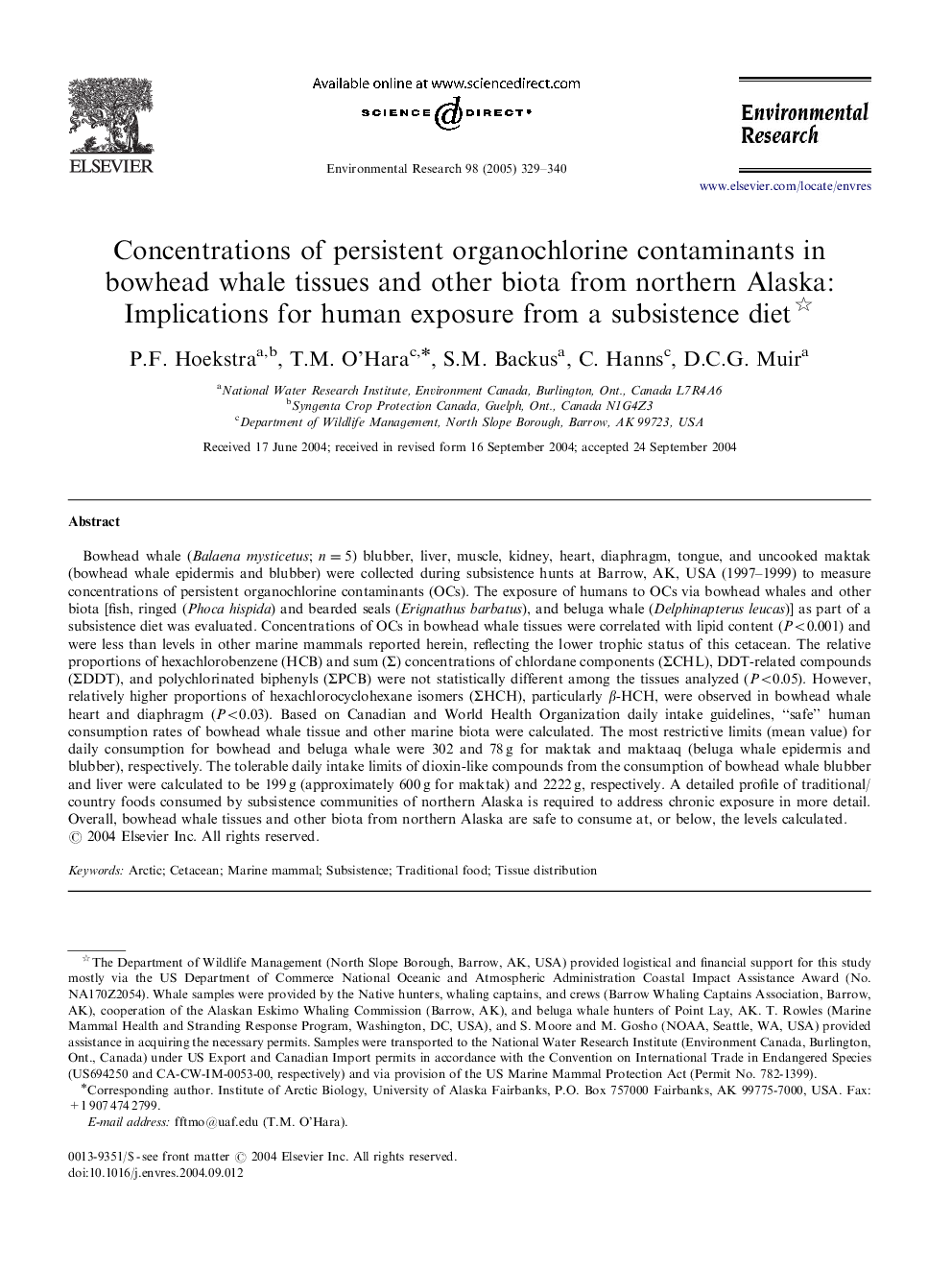| کد مقاله | کد نشریه | سال انتشار | مقاله انگلیسی | نسخه تمام متن |
|---|---|---|---|---|
| 9464472 | 1314465 | 2005 | 12 صفحه PDF | دانلود رایگان |
عنوان انگلیسی مقاله ISI
Concentrations of persistent organochlorine contaminants in bowhead whale tissues and other biota from northern Alaska: Implications for human exposure from a subsistence diet
دانلود مقاله + سفارش ترجمه
دانلود مقاله ISI انگلیسی
رایگان برای ایرانیان
کلمات کلیدی
موضوعات مرتبط
علوم زیستی و بیوفناوری
علوم محیط زیست
بهداشت، سم شناسی و جهش زایی
پیش نمایش صفحه اول مقاله

چکیده انگلیسی
Bowhead whale (Balaena mysticetus; n=5) blubber, liver, muscle, kidney, heart, diaphragm, tongue, and uncooked maktak (bowhead whale epidermis and blubber) were collected during subsistence hunts at Barrow, AK, USA (1997-1999) to measure concentrations of persistent organochlorine contaminants (OCs). The exposure of humans to OCs via bowhead whales and other biota [fish, ringed (Phoca hispida) and bearded seals (Erignathus barbatus), and beluga whale (Delphinapterus leucas)] as part of a subsistence diet was evaluated. Concentrations of OCs in bowhead whale tissues were correlated with lipid content (P<0.001) and were less than levels in other marine mammals reported herein, reflecting the lower trophic status of this cetacean. The relative proportions of hexachlorobenzene (HCB) and sum (Σ) concentrations of chlordane components (ΣCHL), DDT-related compounds (ΣDDT), and polychlorinated biphenyls (ΣPCB) were not statistically different among the tissues analyzed (P<0.05). However, relatively higher proportions of hexachlorocyclohexane isomers (ΣHCH), particularly β-HCH, were observed in bowhead whale heart and diaphragm (P<0.03). Based on Canadian and World Health Organization daily intake guidelines, “safe” human consumption rates of bowhead whale tissue and other marine biota were calculated. The most restrictive limits (mean value) for daily consumption for bowhead and beluga whale were 302 and 78 g for maktak and maktaaq (beluga whale epidermis and blubber), respectively. The tolerable daily intake limits of dioxin-like compounds from the consumption of bowhead whale blubber and liver were calculated to be 199 g (approximately 600 g for maktak) and 2222 g, respectively. A detailed profile of traditional/country foods consumed by subsistence communities of northern Alaska is required to address chronic exposure in more detail. Overall, bowhead whale tissues and other biota from northern Alaska are safe to consume at, or below, the levels calculated.
ناشر
Database: Elsevier - ScienceDirect (ساینس دایرکت)
Journal: Environmental Research - Volume 98, Issue 3, July 2005, Pages 329-340
Journal: Environmental Research - Volume 98, Issue 3, July 2005, Pages 329-340
نویسندگان
P.F. Hoekstra, T.M. O'Hara, S.M. Backus, C. Hanns, D.C.G. Muir,